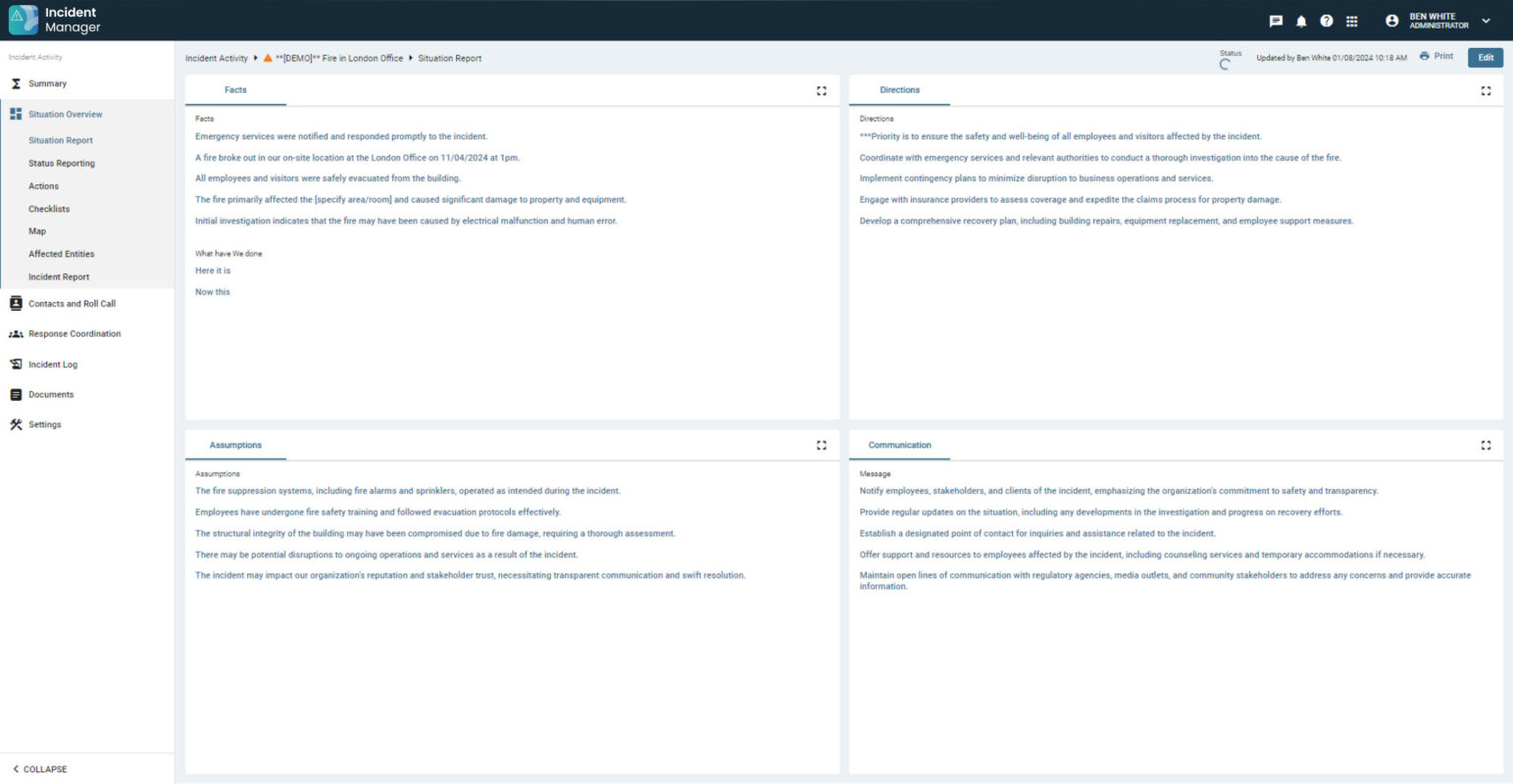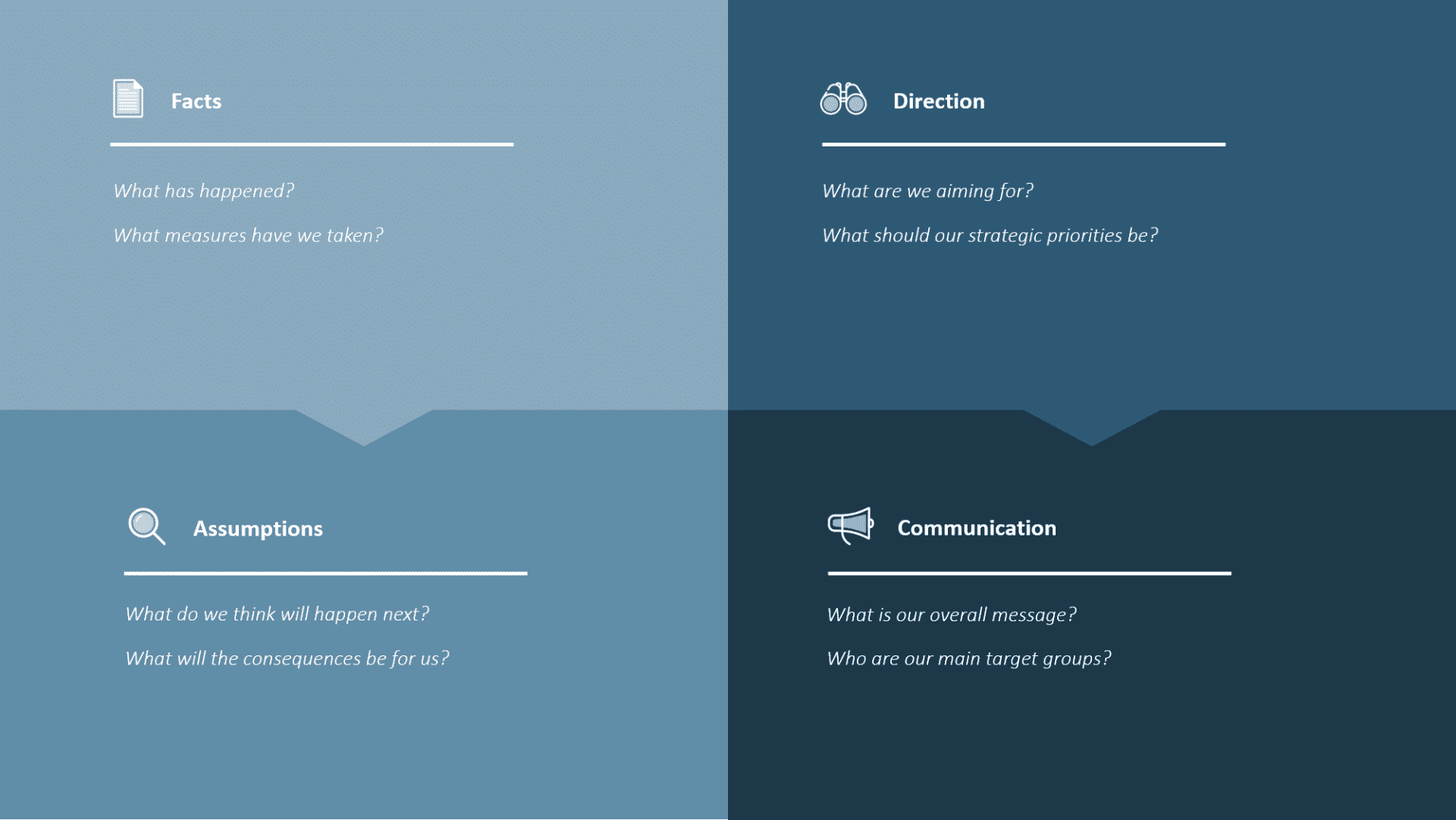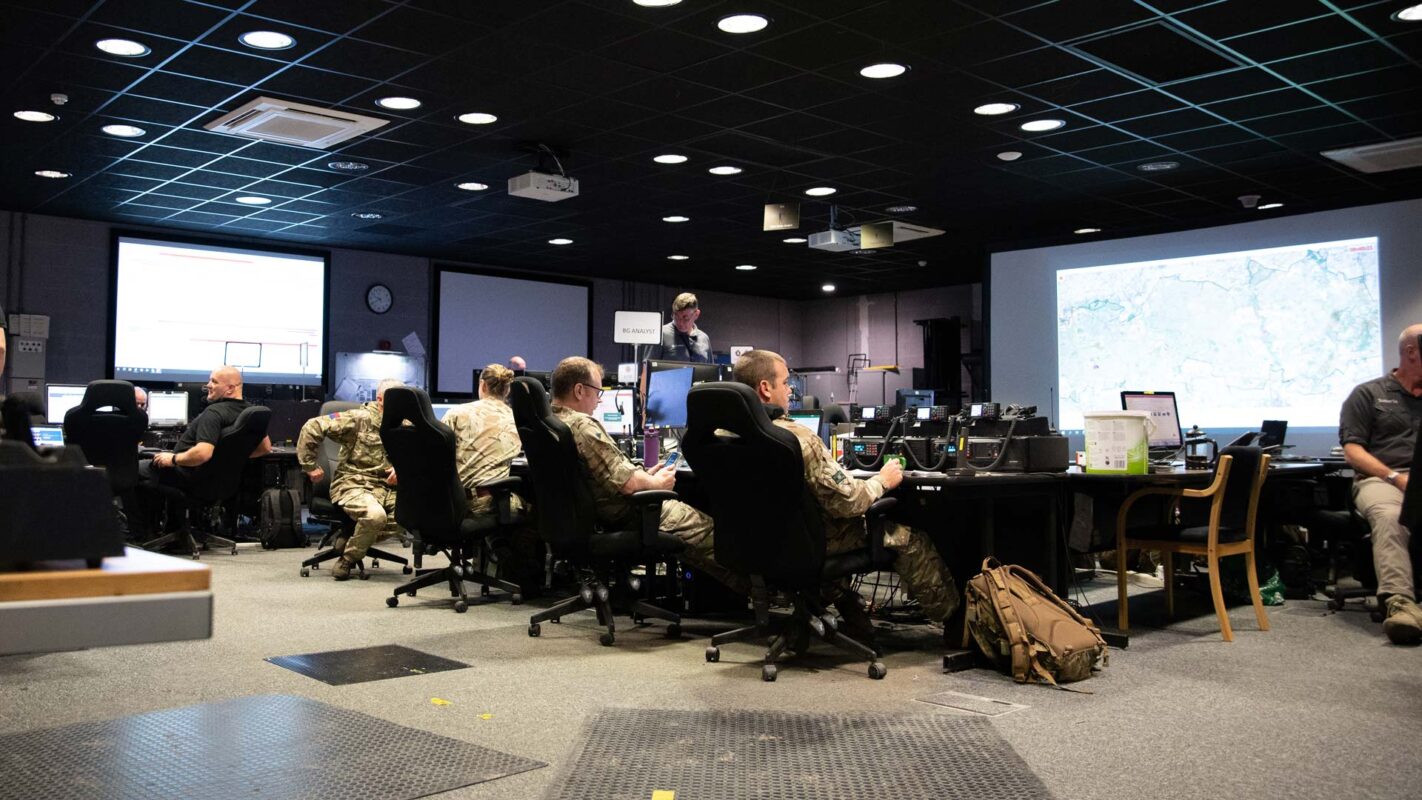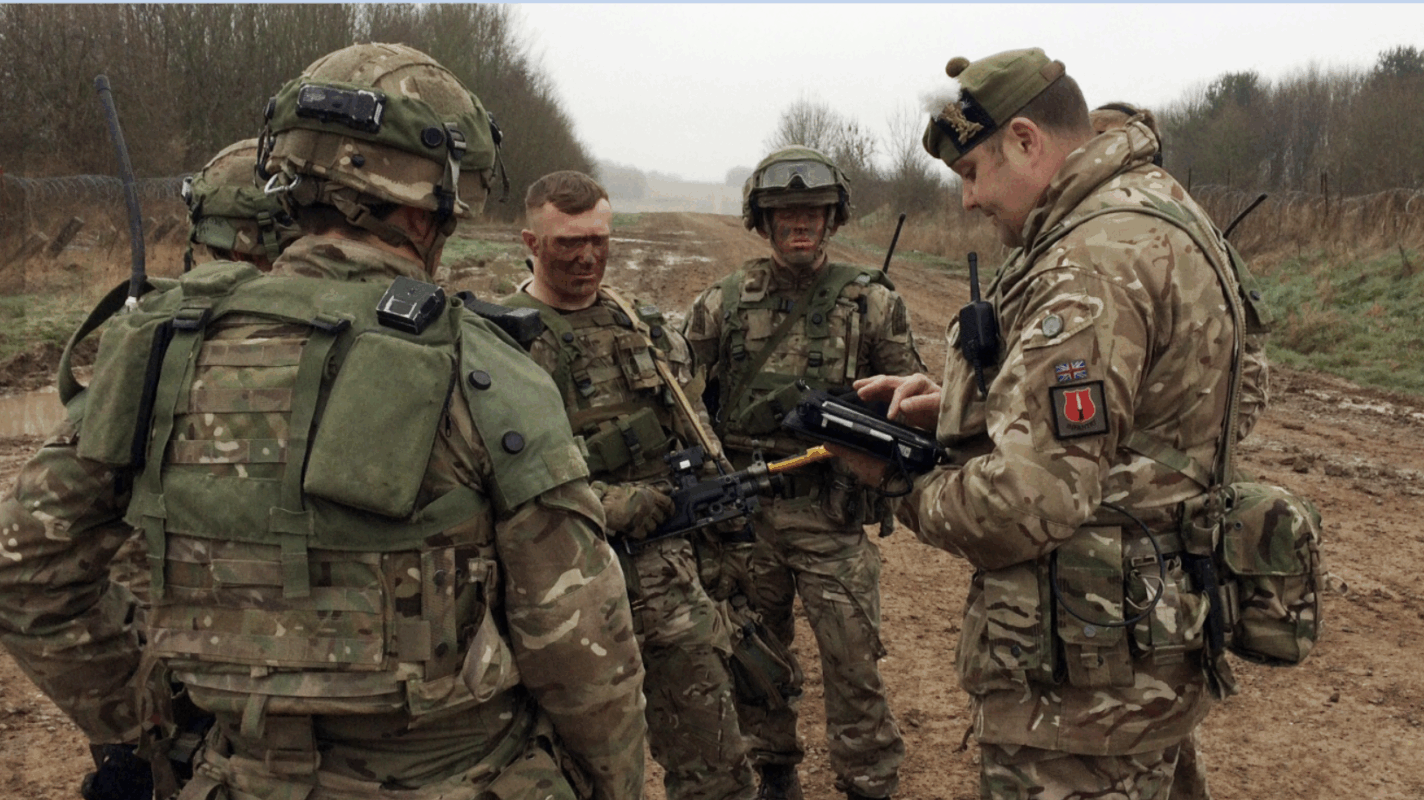
Klas Lindström, who is Deputy CEO at 4C Strategies, tells us more about how the crisis management model was developed, how it is structured and why it is such a great help to organizations responding to a crisis.
In the midst of a crisis, one of the foremost challenges is the large amount of conflicting information and general uncertainty of the situation at hand. 4C have developed a simple, fit-for-purpose crisis management model, which establishes a solid situational overview for strategic decision-making. This is at the center of the Incident Management software’s Collaborative Digital Whiteboard. It is a very useful crisis management tool used in all types of organizations, from multinational companies to national banks, train operating companies, airports, municipalities and national authorities. The model has been effectively deployed in a diverse range of industries around the world from Kuala Lumpur and Bangkok to London and New York.
What mistakes are most often made in a crisis?
If you are part of a crisis management team, you have three important tasks:
- Try to understand what is happening.
- Indicate the way forward for the organisation.
- Ensure the organisation has the mandate and resources required. One of the biggest mistakes we witness are senior managers acting in an operational rather than strategic manner, and mistaking their assumptions for facts. This is why having a model such as this is so important.”
“There was simply no easy-to-use model out there to support crisis management teams. 4C Strategies responded to this need by creating a simple tool to guide crisis decision-making.
Klas Lindström, 4C Deputy CEO
In brief, how does the model work?
It is a simple 2×2 matrix for status reporting and strategic decision-making. The matrix consists of Facts, Assumptions, Direction and Communication.
- Facts are what we know has happened – no speculation – and what measures have already been taken.
- Assumptions are crucial – they reflect what we do not know for certain, but the way in which the event is likely to develop. Assumptions must be verified or reconsidered at every stage of the crisis decision-making
- Direction is about what we want to achieve – our goal and strategic priorities, without micromanaging the operational response.
- Communication is about what we communicate, externally and internally, including the target groups for those key messages.
Why was the matrix developed and what types of organisations have used it?
The matrix was developed because we felt that there was no simple, fit-for-purpose model to support crisis decision-making. Our customers were asking for this and, although we felt that everything from incident logs, status reports and checklists were fine in many respects, there was no overarching tool to hold it all together.
The 4C Model for crisis decision-making has been widely introduced across Sweden and the UK, our two main operating countries, but we have also supported its introduction globally for 31 management teams within a major European Bank, as well as clients such as the European Central Bank, GE Healthcare, Telia and Eurostar, Tesco, and BNP Paribas to mention a few examples. In an international context, the model can be applied effectively across cultural differences, different levels of experiences, as well as difference between different industries and areas of operation.
Getting down to the details
Differentiating between facts and assumptions is an important starting point in a crisis. The mistake many people make is to skip this step and take action without identifying a crisis management strategy.
Many organisations don’t have enough experience in differentiating priorities in a crisis situation. You have to practise to be able to identify what is most important in a crisis on a strategic, tactical and operational level. What tends to happen is that the crisis management team does not set an overarching strategy that considers the long-term consequences and reputational damage; choosing instead to implement a number of purely operational responses. With too many operational measures and no strategy underpinning them, it is easy to lose sight of the bigger picture. The result then will be, at best, a lack of coordination, at worst, everyone tripping each other up.
If you have analysed the facts and made the most important assumptions, you can work out a reasonable worst-case scenario and from there look forward and make assessments about what must be done. Imagine you are working at a company that has a substantial IT disruption. How long do you think it will continue? You optimistically estimate three hours. But after three hours has passed and you find yourself in mid disruption, what do you do now? If you do not give yourself more latitude from the beginning, you will slow yourself down and delay important decisions.
If you can establish the overarching priorities, you can get more people in the organisation to act and get things done to successfully achieve them.
How do you prepare for a crisis situation?
The most important thing is to focus on building up a substantive crisis management capability. This means having an organisation, structure and working method in place and above all having an organisation with the right training and plenty of practice. In the crisis management organisation, it is important to have talked through everyone’s expectations of one another and especially how everyone wants to work together. You cannot just rely on a checklist for something as complex as an ongoing, constantly changing crisis. A crisis is a unique situation where the crisis team must instead take control, understand each other’s roles, and allow plenty of latitude with regard to how serious things may get.
How long does it take to train a customer to use the model?
We typically develop a realistic exercise scenario with our customers, and deliver it in a tabletop format and/or a live simulated exercise where they have to go beyond their usual expertise and comfort zone. It can take anywhere from 3-6 hours to develop to build up a basic capacity in a crisis management team.”
When should the model be brought into play?
Once the absolutely essential measures have been implemented in a crisis situation, for example, people have been evacuated and made safe, a few individuals need to take a step back and gain an overview of the situation with the help of the collaborative whiteboard. However, this is still early on in the crisis, so it is a question of thinking quickly and clearly. The model creates a sense of security and gives you a kind of handrail to hold on to through the crisis.”
Who can benefit from using the crisis model in the whiteboard?
All organisations can benefit, although we tend to work with clients who are exposed to high levels of risk or provide critical services or infrastructure, such as energy companies, banks, hospitals, airports and manufacturers.
In conclusion, have you any advice to an organisation on how to start?
“Three things:
- Talk about how you want your organisation to manage a potential crisis.
- Put some time and effort into discussing how to work together in a crisis management team. In addition to roles, responsibilities and working methods, you have to identify the parties you need to cooperate with and the various target groups for your communication.
- Employ the model and practice, practice, practice.”
Organisational response to the coronavirus outbreak
The outbreak of the coronavirus COVID-19 has, in its initial phase, compelled organisations to review their travel policies, HR policies, international supply chain and other areas. With the spread of the virus across Europe, we have entered into a different phase of readiness and response measures, both in 4C’s internal operations and with our clients.
Thank you for downloading!
The resource will be sent to the given email address. You are welcome to contact us with any question you may have.
Name*
Company*
Email*
checkbox is required
To learn more about how 4C Strategies process data, please read our
I agree to be contacted for the purpose indicated above, and to receive information about 4C Strategies’ products, services and events.
Thank you for downloading!
The resource will be sent to the given email address. You are welcome to contact us with any question you may have.
Name*
Company*
Email*
Phone number
checkbox is required
To learn more about how 4C Strategies process data, please read our
I agree to be contacted for the purpose indicated above, and to receive information about 4C Strategies’ products, services and events.
Download Resources
4C Facts and Assumptions Model for Crisis Management (Template)
COVID-19: Example of 4C Facts and Assumptions Model
Expertise
Get in Touch
If you have any questions about crisis management and how you can use our model, please contact us.
Get in touch














